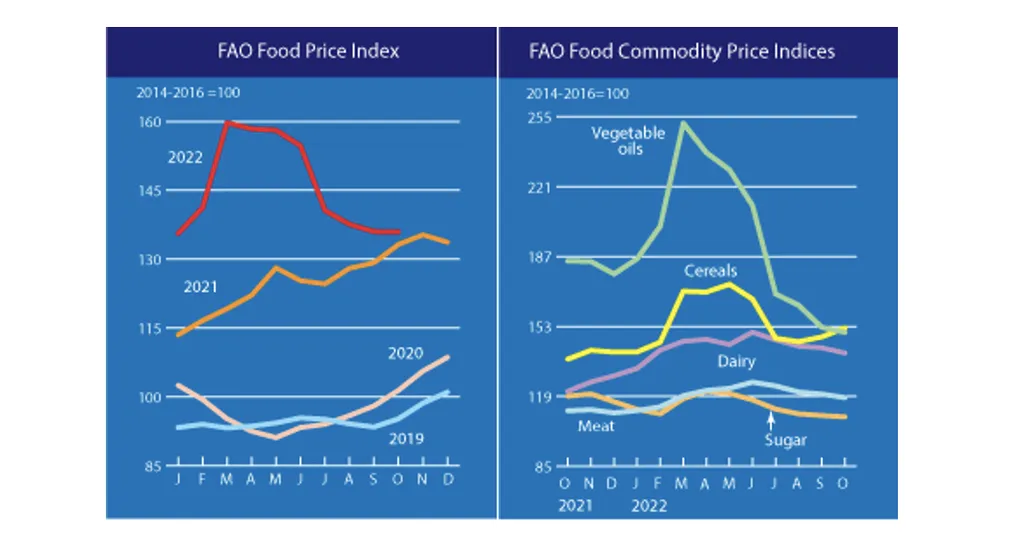The Food and Agriculture Organization (FAO) of the United Nations has reported a second consecutive monthly decline in its Food Price Index (FPI), which fell to 126.4 points in October. This decline of 1.6% month-on-month brings the index slightly below its October 2023 level and 21% lower than its peak in March 2022. The implications of these trends for agritech and investors are multifaceted and warrant a closer look.
The FAO Cereal Price Index, which includes wheat, coarse grains, and rice, averaged 103.6 points in October, down 1.3% from September and 9.5% below its level a year ago. Wheat prices fell by 1%, reflecting ample global supplies and favorable production prospects. This trend could signal a shift in focus for agritech investors towards technologies that enhance crop yield and efficiency, as well as those that improve supply chain logistics and storage solutions. The decline in coarse grains and rice prices, driven by market competition and harvest timelines, suggests opportunities for agritech innovations in precision agriculture and real-time market data analytics to optimize planting and harvesting schedules.
The Vegetable Oil Price Index, however, bucked the trend, averaging 169.4 points in October, up 0.9% from September and reaching its highest level since July 2022. This increase was driven by higher quotations for palm, rapeseed, soy, and sunflower oils. The rise in sunflower oil prices, in particular, highlights the impact of regional supply disruptions and harvest delays. For agritech investors, this could mean a greater emphasis on technologies that improve oilseed crop resilience and yield, as well as those that enhance supply chain transparency and traceability.
The FAO Meat Price Index averaged 125 points in October, down 2% from September but still 4.8% above its level a year ago. The Dairy Price Index averaged 142.2 points, down 3.4% from September, marking the fourth consecutive monthly decline. Despite this, the index remained 2.7% above its level a year earlier. The Sugar Price Index averaged 94.1 points, down 5.3% from September, marking the second consecutive monthly decline and pushing the index to its lowest level since December 2020. These trends suggest that agritech innovations in livestock management, dairy production, and sugar cane cultivation could be areas of interest for investors looking to capitalize on market fluctuations.
Overall, the FAO’s report indicates a mixed landscape for agritech and investors. While cereal prices have declined due to ample supplies and favorable production prospects, vegetable oil prices have risen due to supply disruptions and regional factors. Meat, dairy, and sugar prices have shown varying trends, reflecting the complex interplay of supply, demand, and market dynamics. For agritech investors, this landscape presents opportunities to invest in technologies that enhance crop yield, improve supply chain efficiency, and increase market transparency. By staying informed about these trends and their underlying factors, investors can make strategic decisions that align with the evolving needs of the global food market.

